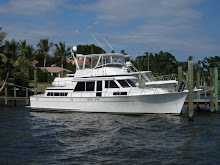The weather has cleared some and we move the boat 60 miles east along the Intercoastal Waterway to Apalichicola and the end of the Gulf Intercoastal Waterway (GIWW). From here, it is open water to Tarpon Springs or Clearwater. We will be in a position to cross the Gulf of Mexico from here when the weather looks better.
 Dredge working in the Grand Lagoon as we leave Panama City.
Dredge working in the Grand Lagoon as we leave Panama City.

Large boat yard out in the middle of nowhere east of Panama City on the GIWW.

Cypress trees still line part of the waterway.

The GIWW is a dug channel in this section.
Even so, very attractive and desolate.

Cypress trees were cut and shipped in the late 1800's.

Some of the GIWW goes through natural areas such as this lake.

Railroad bridge is open as we approach Apalachicola
We approach Apalachicola. Waterfront was the third largest cotton shipping point on the Gulf Coast in 1850, shipping 15,000 bales (500 pounds each) of cotton mostly to England.

There are lots of shrimp boats here.

Several marina's line the waterway at Apalachicola.
The wharf buildings are not handling cotton any more. After cotton it was cypress lumber, then fish and now shrimp, oysters and tourists.

Old wharf now abandoned.

Oyster shells. Several piles around town each larger than a house. Used in making roads and for 'seeding' areas where more oysters will grow. Baby oysters need something to attach to as they do not move around. Apalachicola has large and healthy oyster beds in Apalachicola Bay.
We ate oysters every night for dinner at our marina restaurant, Papa Joes. We ordered a dozen raw ($5.99) and received 16 instead of 12 for each order. We liked the way they count oysters in Apalachicola. The oysters were large and salty and shucked at the bar as the patrons watched. Delicious.

Lots of antique shops

Fully restored Gibson Inn.

Beautiful victorian homes from the prosperous days are now being restored.

Seems like a lot of nice homes.

This one is now a bed and breakfast.

Orman House, now a State Park, was built in the 1830's.
Gorrie Museum tells the story of Dr. John Gorrie who developed a system of air conditioning useful in treating Yellow Fever, and invented a working ice machine in 1835-1840.

'Three Soldiers' in memory of the soldiers from the south who valiantly that served their country during the Vietnam War (1958-1975). This is a detail cast from the origonial molds of Frederick Hart's 'Three Soldiers' statue the at the Vietnam Veterans Memorial, Washington, DC.

We found 30 shrimp boats in the local boat basin and bought some shrimp right off the boat.





















0 Comments:
Post a Comment
Subscribe to Post Comments [Atom]
<< Home